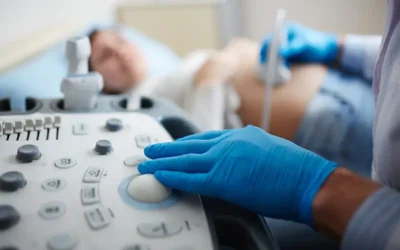Understanding anesthesia modifiers and HCPCS Level II modifiers is essential for accurate medical billing and coding. These two-digit codes provide critical information to payers about the circumstances under which a procedure or service was performed. Proper use of these modifiers ensures clarity, prevents claim denials, and supports compliant reimbursement.
Anesthesia medical coding specialists at experienced medical coding outsourcing companies are trained to determine when and how to apply anesthesia modifiers like AA, QX, or QZ, and HCPCS modifiers such as LT, RT, or GC. In anesthesia billing, CPT anesthesia codes must be paired with the correct anesthesia reimbursement modifier to reflect the provider’s role—whether it’s the anesthesiologist, a CRNA, or medical direction.
Anesthesia HCPCS modifiers are two-letter codes used to indicate specific details about anesthesia services provided. They are required on claims submitted to Medicare and many other payers. Using the right modifiers not only improves billing accuracy but also speeds up claims processing and reduces the risk of audits or delays in payment.
Key Anesthesia Modifiers
AA: Anesthesia Services Performed Personally by the Anesthesiologist
Modifier AA is used when the anesthesiologist personally performs the entire anesthesia procedure without the assistance or direction of a CRNA or any other qualified individual. This modifier indicates full responsibility and presence during the administration of anesthesia.
Submit Modifier AA when the anesthesiologist is directly involved from pre-anesthetic evaluation through post-anesthesia care.
AD: Medical Supervision by a Physician for More than 4 Concurrent Anesthesia Procedures
Modifier AD is reported when a physician supervises more than four anesthesia cases at the same time. This level of supervision limits the amount of reimbursement because it exceeds the allowable scope of medical direction.
Append Modifier AD when billing for a supervising anesthesiologist overseeing five or more simultaneous cases. Medicare reimburses differently than for medical direction of up to four cases.
QK: Medical Direction of 2 to 4 Concurrent Anesthesia Procedures Involving Qualified Individuals
Modifier QK is used when an anesthesiologist is medically directing 2, 3, or 4 concurrent procedures carried out by qualified anesthesia personnel, such as CRNAs or anesthesiologist assistants.
Add Modifier QK when the anesthesiologist fulfills medical direction criteria and is involved in no more than four cases simultaneously.
QY: Medical Direction of One Qualified Non-Physician Anesthetist by an Anesthesiologist
Modifier QY identifies situations where an anesthesiologist medically directs a single CRNA or other qualified non-physician anesthetist. Unlike Modifier QK, this is specific to one-on-one direction.
QY is used when the anesthesiologist is supervising only one CRNA and meets all seven steps of medical direction as per CMS guidelines.
G8: Monitored Anesthesia Care (MAC) for deep, complex, or markedly invasive surgical procedures.
G9: Monitored Anesthesia care for patients with a history of severe cardio-pulmonary conditions.
- CRNA Modifiers
Certified Registered Nurse Anesthetists (CRNAs) play a critical role in delivering anesthesia services, and correct modifier usage is essential for proper billing and reimbursement. CRNA modifiers help identify whether the CRNA provided services independently or under the medical direction of a supervising physician, usually an anesthesiologist.
QX: CRNA Services with Medical Direction by a Physician
Modifier QX is reported by the CRNA when they are providing anesthesia services under the medical direction of a physician, typically an anesthesiologist. This modifier pairs with either QY or QK on the physician’s claim. The CRNA appends QX when they are under direct medical supervision and the anesthesiologist bills using QK or QY.
QZ: CRNA Services without Medical Direction by a Physician
Modifier QZ ndicates that the CRNA provided anesthesia services independently, without medical direction by a physician. This modifier is often used in states where CRNAs are allowed to practice without supervision (opt-out states). Claims with Modifier QZ are generally reimbursed at 100% of the allowed amount.
P1–P6 Anesthesia Physical Status Modifiers
The following informational modifiers are used to indicate physical status during the anesthesia procedure. They should be used after reimbursement modifiers.
P1 A normal healthy patient
P2 A patient with mild systemic disease
P3 A patient with severe systemic disease
P4 A patient with severe systemic disease that is a constant threat to life
P5 A moribund patient who is not expected to survive without the operation
P6 A declared brain-dead patient whose organs are removed for donor purposes
- General Informational Modifiers
General informational modifiers can be used for procedures other than anesthesia, but may also apply to procedures an anesthesiologist performs. They should be appended after reimbursement modifiers
- PT – A colorectal cancer screening test which led to a diagnostic procedure. This modifier can be applied to a variety of surgical codes, but for anesthesiologists, append to anesthesia procedure code 00810 only
- Q6 – Service furnished by a locum tenens physician
- Other Relevant Modifiers in Anesthesia Billing
GC: Services Performed in Part by a Resident Under the Direction of a Teaching Physician
HCPCS modifier GC indicates that a service was performed in part by a resident under the direction of a teaching physician. While the resident’s portion of the service is not directly reimbursable to the resident, the teaching physician can be reimbursed for the portion of the service they performed or supervised, provided they meet specific documentation requirements.
Key Points About Modifier GC:
- The teaching physician must be present during key portions of the service (e.g., surgery or critical parts of evaluation).
- This modifier ensures that the claim meets Medicare’s teaching physician guidelines for reimbursement.
- It applies to E/M services, procedures, and anesthesia when residents are involved.
23: Indicates an unusual anesthesia situation, such as a procedure usually not requiring anesthesia but performed under general anesthesia.
51: Indicates multiple procedures performed at the same session or a single procedure performed multiple times at different sites.
52: Indicates a reduced or eliminated service at the physician’s discretion.
53: Indicates a service discontinued due to special circumstances.
33: Indicates a preventive service, aligning with USPSTF A or B ratings.
26: Indicates the professional component of a service, such as supervision or interpretation.
- Anatomical Modifiers
Anatomical modifiers indicate the area or part of the body on which the procedure is performed on during the same session. HCPCS modifiers are regularly used in CPT codes to describe a bilateral procedure that was only performed on one side of the body.
E1-E4 Eyelids
FA-F9 Fingers
TA-T9 Toes
RT Right
LT Left
LC Left circumflex, coronary artery
LD Left anterior descending coronary artery
LM Left main coronary artery
RI Ramus intermedius
RC Right coronary artery
Correctly Applying Anesthesia Modifiers
Each modifier carries specific billing implications. Correctly reporting anesthesia modifiers is essential for accurate medical billing, proper reimbursement, and compliance with payer guidelines, especially when multiple providers, such as anesthesiologists, CRNAs, and residents, are involved.
By staying up to date with modifier rules and Medicare guidelines, providers can streamline claim processes, maintain compliance, and ensure appropriate payment for services rendered. Partnering with a knowledgeable medical billing and coding company ensures that your anesthesia claims are submitted with the right modifiers, reducing the risk of denials, delays, or audits.
Get in touch with our expert medical coders to ensure clean claims and faster reimbursements.




